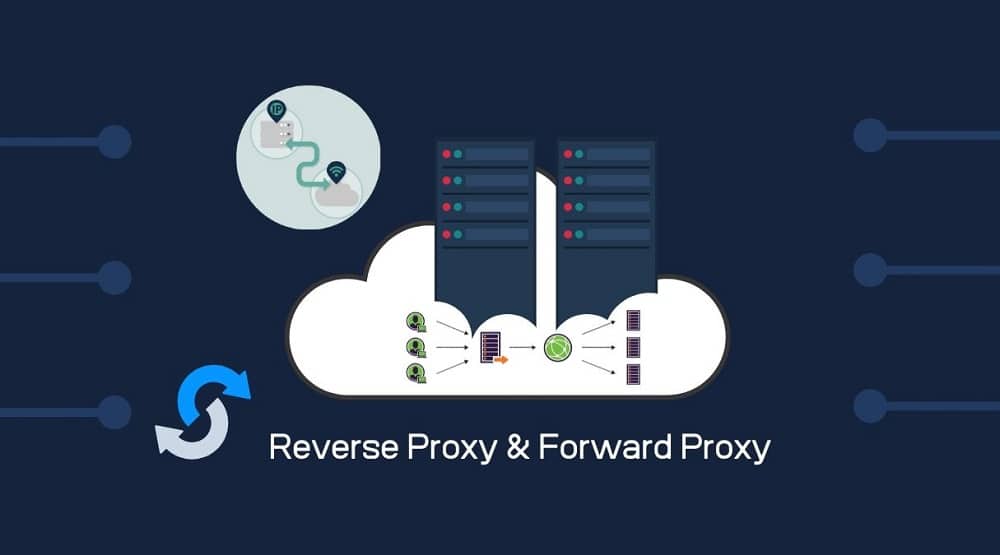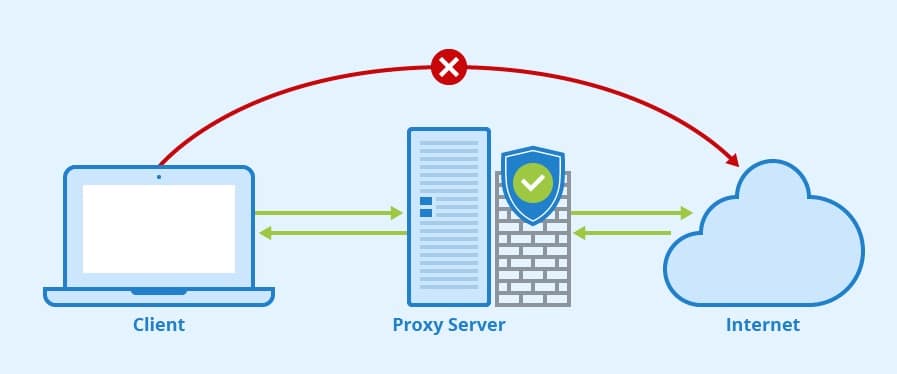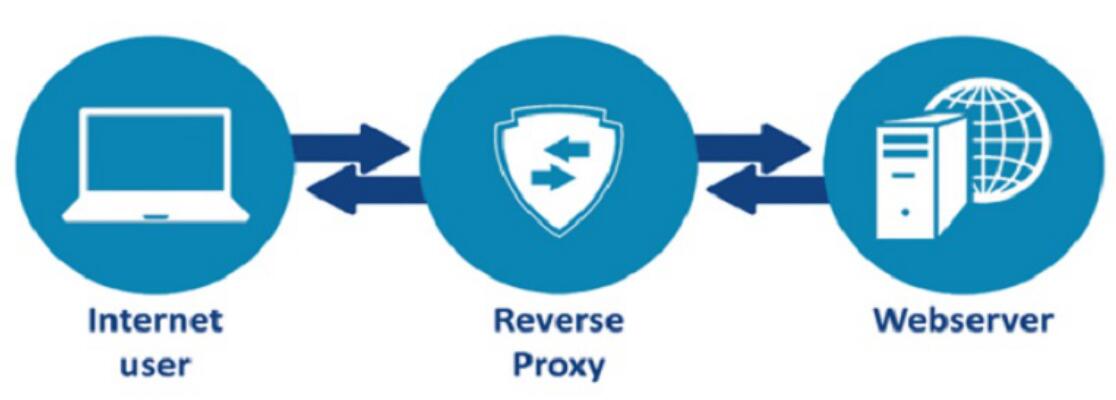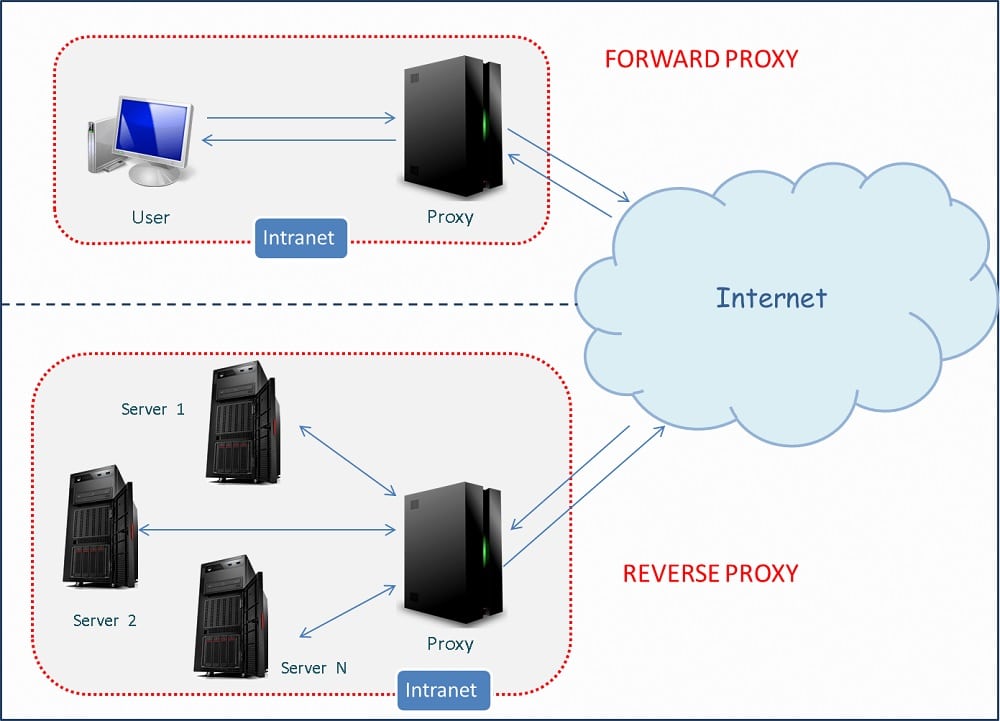Wondering what differentiates Reverse Proxy from Forward Proxy? come in now to discover the differences between them and where each of them is useful from our proxy experts.

If you are new to the proxy world, you must have come across the two terms – reverse proxy and forward proxy. Really, they are not the same concept. I have seen people mistake one for the other, and this stems from the fact that they do not really understand both.
It is because of this that I wrote this article; to reveal to you what differentiates reverse proxy from forward proxy and how they carry out the same function in different environments. Before that, let take a look at what each of them is.
Definition of Reverse Proxy and Forward Proxy

I know, you might be wondering why bringing this up; this is because you must have been given a niched definition of what a proxy is. Most people see a proxy as a server that clients’ send their web requests to websites through them.
Well, that does not cover all that a proxy is all about. Unlike in most of our articles, we have to go more technical and redefine proxies for you. A proxy is simply a server acting on behave of another computer which can either be a client or server. This means that aside from you as a client that need proxies to hide behind, the webserver you are requesting resources from can also hide behind a proxy.

What is a Forward Proxy?
When you hear people mention the word ‘proxy,’ in web technologies, what they actually meant are Forward Proxies. Forward Proxies are the types of proxies that clients use to hide their IP Addresses and remain anonymous while surfing the Internet.
What they do is forward requests send through them to the appropriate web servers and when the response is returned to them, they send it back to you. Depending on the level of anonymity, the web server you request resources from won’t know you initiated the request. But the Forward Proxy knows both you and the web server you request contents from.
How a Forward Proxy works

When connected to a proxy your device sends a regular request like it would if the proxy didn't exist, but it would forward all of its requests through that
proxy and the proxy will take the requests, and reroute them through its own IP address, and if obfuscated (anonymous) it will hide your IP address, and replace it with its own address instead.
Related,
- The easiest type of forward proxy is the Web Proxy server.
- What is a Transparent Proxy? Answered!
- What is an Anonymous Proxy? Answered
- What is a High Anonymous Proxy? Answered!
- What is a private proxy & Why use it?
What is a Reverse Proxy?
While the above is applicable to only clients, some proxies have also been developed to provide privacy for web servers. Let me tell you something. It is not only you that needs privacy; web servers to need it because they do not know if you are trustworthy or not. Some are there for other reasons, though.
A Reverse Proxy is a proxy server that receives web requests on behalf of web servers. After receiving the request, base on its configuration, it determines if the request is worthy of being routed to the actual server or not.
With a Reverse Proxy in place, hardly would the actual server get hit directly – this is because only the IP Address of the Reverse Proxy is made public. This creates some level of privacy for the servers.
How a Reverse Proxy works

Reverse proxies are a bit different, in that they don’t work for you, they work for a website. They aren’t proxies that help you keep yourself anonymous, and in fact, they aren’t something you can use in casual web browsing at all. Instead, they’re something that companies and websites use to protect themselves from various types of connections, or to use as filters, firewalls, or additional security.
Essentially, a web server might be one server or a set of them, but they don’t connect directly to the internet. Instead, they connect to the reverse proxy. That reverse proxy acts as the web server. You as a web browser connect to the website and just see the proxy; you don’t see any of the servers behind it. The proxy pretends to be the web server, while performing features like hiding the true server IP.
- More, Our guide to reverse proxy.
Reverse Proxy Vs. Forward Proxy
Looking at the above definitions, you can see that the two terms are not the same and, in fact, quite different. Just in case you did not spot the difference, this section will discuss the differences between the two of them in detail.

-
Structural Position
The most important distinguishing feature of both reverse proxies and their forward proxies’ counterparts is their structural position in the whole mix of sending and receiving a response. For Forward proxies, they are client-side and provide client-side anonymity for your PC. Forward proxies are your gateway to the Internet and they can modify your requests before it gets to the website you intend to visit. For you to make use of forward proxy, you need to configure them at your own end – the client-side.
For reverse proxies, they are server inclined and provide server-side anonymity. They serve as the gateway to the webserver you intend to interact with. Just as you do not want web servers to know your real IP Address, some organizations also do not want you to know of the existence of their actual servers; so, they out a proxy in place to act as their real server. But when requests come in, it routes it to the actual server.
-
Area of Application
The structural location of the two proxy types has made their area of application different. While both can block moderate users’ traffic and are both gateways, their applications differ. What then are the use cases of each of them?

For Forward proxies, their use case is pretty straightforward and known by many Internet users
The whole idea of providing IP Address and location privacy opens up a lot of areas Forward proxies are useful. Forward proxies are useful in the area of brand protection and Ads verification. They are also useful in SEO, web crawling and scraping, as well as in the areas of playing online games. They are also required for use together with sneaker copping bots, ticket scalping bots, social media automation tools, and many more.
For Reverse proxies, their usage is not known to the public except those that have knowledge of server-side technologies
One of the most important uses of Reverse Proxies is that they are used for load-balancing. They distribute incoming web requests to a group of web servers carrying out the same function – this makes it possible for a high traffic website to provide quick responses to requests sent to them. Aside from this, they are used for caching, which eventually leads to a quicker response and saved bandwidth. They are also used for security reasons to provide some form of wrapper around actual servers so that it becomes difficult to attack them directly.
Conclusion
Looking at the above, you will see that while each of them all has the word, ‘proxy,’ in their names, they are in fact, not the same thing. They both have their unique uses based on their position in the request to response cycle. However, It is important you know that each moderate your traffic and can either block your requests or authorize them.






